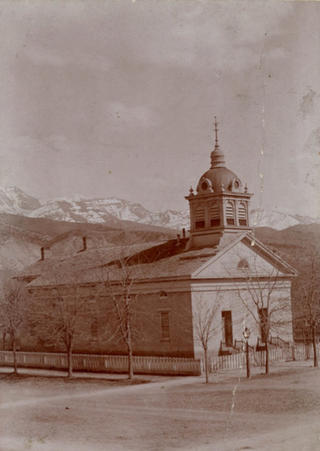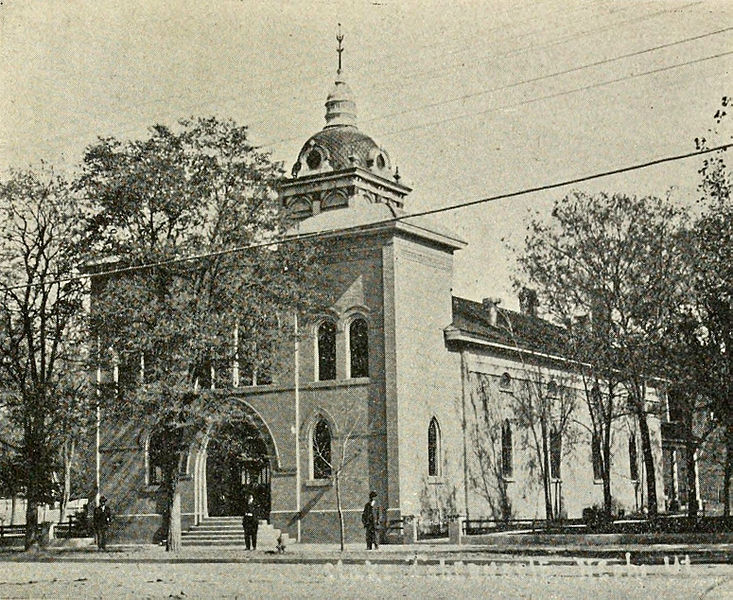The City of Nephi was originally called the City of Salt Creek being settled by a group of seventeen families. By 1868, the Nephi Stake was created and is currently the 5th continuous operating stake in the LDS Church. The residents built the structure before it was a stake, building it from 1860 to 1865, originally calling it the Nephi Tabernacle. The design for the building looked similar to the old Provo Tabernacle. The cupola was large enough to hold a band of 30 musicians who performed from the perch on special occasions. Zimri H. Baxter was the architect and Timothy B. Foote was selected by President Brigham Young to supervise the building. It was later called the Juab Stake Tabernacle and sold to Nephi City in 1947. It was demolished in 1949.
LDS Historic Sights
Juab Stake Tabernacle - Nephi Stake
Intersection of Main and Center Streets in Nephi.. (stood on the southeast corner)
From "Heart Throbs of the West: Volume 1: History of Juab Stake Tabernacle" we learn:
The stone for the foundation was brought from Marsh Canyon, and the heavy timbers were taken from M____ Canyon, where they were hewed and prepared by hand by workers in the canyon. The walls of the building were constructed of blue adobe, the clay being hauled from the North Meadow to the grounds where the adobe ___.
The lath, some of which were six feet long, were sawed at the mill of Charles Price, located on the banks ___on Fourth East street between Center and First South. Charles Price, Benjamin Riches, Zamri H. Baxter,
This is a photograph of the Juab Stake Tabernacle, published in 1914 in the Improvement Era magazine.


____and Henry Adams, an eleven year old boy, did the work, assisted by others, whose names can not be obtained. Sperry and John Kienke were the masons, and Charles Foote, Reuben J. Downs, Alex Gardner, Isaac Sov______others did the carpenter work. The story is told of Isaac Sowby that he walked to Salt Lake City from Nephi with his tools that he might work on the building. J.H. Rumell of Salt Lake City, came to Nephi to do the plastering of gypsum that had been discovered in the foothills east of Nephi, and from this Mr. Rumell made the cornice_____for the ceiling. It is stated that a man named Pickering also did some of the work, making that cornice. A____Boswell, who in 1856 came to Nephi from the gold fields of California, brought five hundred dollars in ____him. Some of this money was used to purchase the glass for the church. Every man and boy available who ____building preparatory to its dedication in 1865. C.H. Bryan was bishop at the time of its completion.

